- News
- Reviews
- Bikes
- Components
- Bar tape & grips
- Bottom brackets
- Brake & gear cables
- Brake & STI levers
- Brake pads & spares
- Brakes
- Cassettes & freewheels
- Chains
- Chainsets & chainrings
- Derailleurs - front
- Derailleurs - rear
- Forks
- Gear levers & shifters
- Groupsets
- Handlebars & extensions
- Headsets
- Hubs
- Inner tubes
- Pedals
- Quick releases & skewers
- Saddles
- Seatposts
- Stems
- Wheels
- Tyres
- Tubeless valves
- Accessories
- Accessories - misc
- Computer mounts
- Bags
- Bar ends
- Bike bags & cases
- Bottle cages
- Bottles
- Cameras
- Car racks
- Child seats
- Computers
- Glasses
- GPS units
- Helmets
- Lights - front
- Lights - rear
- Lights - sets
- Locks
- Mirrors
- Mudguards
- Racks
- Pumps & CO2 inflators
- Puncture kits
- Reflectives
- Smart watches
- Stands and racks
- Trailers
- Clothing
- Health, fitness and nutrition
- Tools and workshop
- Miscellaneous
- Buyers Guides
- Features
- Forum
- Recommends
- Podcast
review
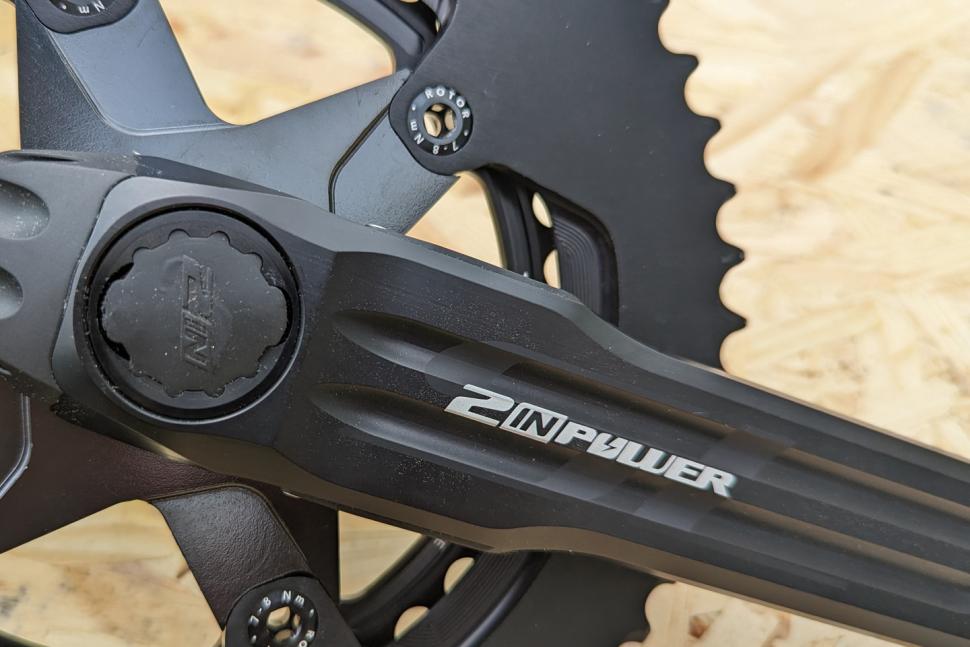 Rotor 2INPower SL power meter
Rotor 2INPower SL power meter£879.99
VERDICT:
Genuine dual-sided power meter with a versatile modular fit that delivers consistent data – and with a very good battery life
Versatile modular fit system
Reliable data capture
Long battery life
The full system isn't cheap
Glitchy app
Short recharge cable
Weight:
738g
Contact:
At road.cc every product is thoroughly tested for as long as it takes to get a proper insight into how well it works. Our reviewers are experienced cyclists that we trust to be objective. While we strive to ensure that opinions expressed are backed up by facts, reviews are by their nature an informed opinion, not a definitive verdict. We don't intentionally try to break anything (except locks) but we do try to look for weak points in any design. The overall score is not just an average of the other scores: it reflects both a product's function and value – with value determined by how a product compares with items of similar spec, quality, and price.
What the road.cc scores meanGood scores are more common than bad, because fortunately good products are more common than bad.
- Exceptional
- Excellent
- Very Good
- Good
- Quite good
- Average
- Not so good
- Poor
- Bad
- Appalling
The new Rotor 2INPower SL power meter is an update to its previous 2INPower meter. Rotor has reduced the weight and claims that its new SL is the lightest dual-sided power meter on the market. Its modular design is compatible with most current bottom bracket standards, it has demonstrated the ability to generate consistent, repeatable data, and with its long-lasting rechargeable battery, the system can compete with the best power meters available.
> Buy now: Rotor 2INPower SL for £880 from Sigma Sports
Our best cycling power meters buyer's guide rounds up our top 10 power meters.
Rotor claims it has reduced the weight of its new SL chainset by 15% compared with the previous 2INPower chainset. For 170mm cranks this translates into a 66g weight loss, thanks to the use of what Rotor refers to as its Trinity Drilling System, which is used to create the 7075-T6 crank arms.
In 2018 Rotor introduced its original 2INPower dual-sided power meter, which featured eight strain gauges – four in the axle and four in the driveside crank arm. In addition to this, Rotor also makes the INSpider, a single-sided power meter that attaches to the driveside of a Rotor chainset using the OCP (Optimal Chainring Position) system.
Compatibility
Rotor has kept many of the features of the original 2INpower, including the OCP. The OCP allows you to quickly and easily change the mounting position of the chainring or spider, which is especially beneficial if you use oval chainrings. Rotor is well known for its oval-shaped 'Q' chainrings, and Rotor says the OCP allows you to adjust the chainring 'to the precise point where you deliver maximum power during a single pedal rotation'.
> Power to the people! Why training with power is now cheaper and easier than you'd think
One of the big advantages of the Rotor setup is its versatility and the number of bottom bracket and chainring choices available to you.
It's available in four crank arm lengths – 165, 170, 172.5 and 175mm – which is comparable to SRAM Quarq and Shimano Ultegra and Dura-Ace, though doesn't go quite as short as some other Rotor crank arm options.
Weight
Rotor boldly claims that the 2INPower SL lightest dual-sided power meter on the market – more specifically, the lightest dual-sided power meter with a crank-mounted strain gauge and electronics in the spindle.
This being cycling, comparing its weight with that of its competitors is never going to be straightforward, as there are so many different power meter setups and locations available to us.
Our test model's crank arms and axle weighed in at 527g – 174g for the non-driveside, 353g for the driveside and attached axle. The 110mm x 4 spider added 51g, the 52T chainring 121g, the 36T ring 33g, with four chainring bolts adding a final 8g.
This makes an overall weight of 738g.
If you want to trim a tad more, Rotor's 52/36 direct-mount rings will bring the weight down to 695g.
The claimed weight of the Shimano Dura-Ace 9200 is 752g with 170mm arms and 52/36 chainrings, while the dual-sided Stages Dura-Ace 9100 weighs 745g with 172.5mm arms and 52/36 rings.
While SRAM claims to provide separate left and right power measurements, its Red AXS power meter, which is based on Quarq has a claimed weight of just 630g with 170mm cranks and 50/37 rings, is not a genuinely dual-sided power meter.
And then there are dual-sided pedal-based power meters. The Wahoo Powrlink Zero weighs 276g, the Favero Assioma Duo 303g and the Garmin Rally RS200 320g. With the Wahoo pedals, the cleat weight is also a factor, as they are heavier than Look or Shimano options. This compares with weights of 228g a pair for standard, non-power meter Dura-Ace SL pedals and 240g for a pair of Look Blade Carbon pedals.
So, is the Rotor 2INPower SL the lightest dual-sided option available today? Probably not. And if you wanted to keep weight down to the absolute minimum, you'd probably go for power meter pedals paired with a lightweight non-power meter chainset.
But the weight of the Rotor system is at least competitive against other axle-based dual-sided options.
Power measurement
The claimed accuracy has improved from +/- 2.0% to +/- 1.5% compared to the previous 2INPower version.
You can use the Rotor app to record rides with the usual measurements shown, including heart rate and GPS data. This feature will likely be of little benefit for riders using GPS head units, but the app does have other features, such as TORQUE 360, which displays your power across the entire 360-degree rotation. That said, the app did crash a couple of times and it didn't record the TORQUE 360 in a way you could look back on later, you could only see it real time.
If you do choose to use the TORQUE 360 feature it will likely mean an additional mount on the bike to hold a phone, or perhaps a more suitable option is to use it on a turbo trainer.
The app can also provide you with the ideal orientation for the OCP fit if you decide to fit oval chainrings.
The app does have a calibrate function, though you can still calibrate using GPS head units with calibration functions. It takes a little longer than with some other power meters, as you have to position the pedals vertically and hit calibrate, which will display a number – which should be 1,000. Then you rotate the pedals twice backwards and hit calibrate again. If successful you should see a number in the range +/-200.
Power reading and reliability
To test and compare the power meter reading I did several tests, both indoors and outdoors.
I initially tested this outdoors with Favero Assioma Duo pedals fitted, capturing the data simultaneously using separate head units. There was some discrepancy between the average ride power measurements, although crucially both tracked closely on any changes in power. The largest variance was a 4-5% difference, but for some rides there was almost no difference. Where there was a difference, the 2INPower SL reading was always the lowest of the two.
Moving indoors and testing on a Tacx Neo2 trainer, and still using Assioma Favero pedals, I was able to have a three-way comparison in a more controlled environment.
All three devices recorded almost identical data during a 25-minute interval session, both on average and at specific points. Just 2.1 watts – or 1.08% – separated the highest and lowest average power values.
The Favero Assioma Duo and Rotor 2INPower SL – the only true dual-sided options available – also recorded similar patterns for their L/R power balance, although it produced slightly different numbers, with the Rotor 2INPower SL showing a higher imbalance.
I do have a significant L/R imbalance while riding, so either figure could be correct.
It would be impossible to find out which of the three power meters was providing the truest value without a lab and calibrated gear – but when comparing the devices, data was recorded at levels that remained constant and within the claimed percentage range for both indoor and outdoor cycling during the entire test period.
If you have several brands of power meters on different bikes, it's possible these small variances may lead to problems if you're training towards extremely specific power values or a percentage of your FTP (functional threshold power), but this will always be a possibility if you're using different power meters even within the same brand.
The 2INPower SL uses a rechargeable lithium-ion battery housed inside the axle, which has a 250-hour stated battery life and a three-hour recharge time. Most other power meters, including SRAM/Quarq, Stages, and 4iiii use a disposable coin battery, but even compared to other rechargeable power meters, the Rotor's battery life is very good: Wahoo claims 75 hours for Powerlink, and Favero Assioma 50 hours.
The recharging point is hidden behind a rubber cap on the axle, though with the charging cable just a metre long you'll have to park your bike close to the plug or use a USB extension cable. However, given the battery life it's not as if you're going to be doing this very often.
You can rotate the rubber cap away from the recharging point or remove it completely to charge the battery, though if you do remove it, replacing it is a little tricky. And even if you do misplace it entirely, it still won't affect the unit's integrity, as it has an IP67 rating even with the cap off. This means it's effectively waterproof (including being submerged in water for up to 30 minutes) and is also protected against dust and sand.
I've been using the Rotor 2INPower SL for several thousand kilometres without issue, and it's still delivering reliable data. And given Dave's experience with the previous Rotor 2INPower, I've no doubt about its long-term reliability.
Value
The 2INPower SL costs £879 for the crank arms and axle, with extras such as chainrings or a spider on top. This price is slightly below the SRAM Red Quarq system even when chainrings are factored in, as this costs £1,187 while the Dura-Ace R9200 power meter that Liam reviewed is £1,199.99.
There are lower priced options, such as the latest SRAM Force at £772, while dual-sided options from Stages start from £875 for a Shimano Ultegra R8100 model.
The Favero Assioma Duo pedals retail at just £699 but Jack really rated them for their low weight and their ease of setup.
Anna Marie was almost as positive about the Garmin Rally RK200 Dual-sensing Power Meter pedals, which are now £869.99.
Rotor's single-sided INSpider spider-based power meter that I tested a couple of years ago costs £611 but when you factor in an axle and Rotor ALDHU aluminium crank arms, you're looking at close to £940, which makes me think the new 2INPower SL is better value.
Conclusion
The biggest benefit with the new 2INPower SL is the reduction in weight, which'll save you around 66g depending on the length of the cranks. Other advantages of the system are that you can of course use your own pedals, and the super-versatile modular system is designed to work with a huge range of chainring options – including Rotor's own oval rings – as well as pretty much every bottom bracket standard out there.
And while lower weight isn't an issue for all of us when it comes to a power meter, accuracy and durability are. The battery life is excellent, the whole setup feels durable and it has delivered consistent data that I feel I can trust all the time.
Verdict
Genuine dual-sided power meter with a versatile modular fit that delivers consistent data – and with a very good battery life
road.cc test report
Make and model: Rotor 2INPower SL
Size tested: 52/36T rings, 170mm cranks
Tell us what the product is for and who it's aimed at. What do the manufacturers say about it? How does that compare to your own feelings about it?
Rotor says:
ROTOR 2INpower SL Crankset. Get the most precise data with 2INpower SL dual measurement technology, now with a total weight of just 729g with 170mm cranks and 50/34 round chainrings.
The 2INpower SL will allow you to get accurate power data from each leg independently, to comprehensively analyze all your data. Use data like torque effectiveness, pedal smoothness, balance, TORQUE 360, OCA and OCP to have a precise biomechanical control of your pedaling.
ROTOR chainrings, compatible with Shimano® 11 and 12 speed groupsets, incorporate an aerodynanmic design that improves air flow. Their optimized sprocket set allows fast and precise shifting in any situation, while the new architecture improves their structural rigidity, which is why they are the preferred choice of the most demanding cyclist.
In addition, if health and/or performance is important to you, Q Rings oval chainrings should be your choice over round chainrings. Thay will allow you to pedal more efficiently, making the most of the power generated during your pedaling while reducing the stress on your knees, giving you a healthier pedaling experience.
Tell us some more about the technical aspects of the product?
Rotor lists:
Crank length (mm) 165mm | 170mm | 172.5mm | 175mm
Size 46/36 | 50/34 | 52/36 | 53/39 | 54/42
Weight (170mm & R50/34T) 729g
Axle 30mm
Q-Factor 147.5 mm
Chainline 43.9mm 2X Shimano® 12s compatible
Measurement Right & left legs independent
Data Power | Cadence | Balance | Torque effectiveness | Pedal smoothness
Power Accuracy +/- 1.5 %
Battery life 250h (riding time)'
Battery Rechargeable with USB cable
Battery Model Li-ion 3.7V
Connectivity ANT+® | Bluetooth® Smart
Water resistance IP67
Material 6082 T6 | 7075 T6 Aluminum alloy
Frame compatibility BSA | ITA | BB30 | BB86 | BB386 | BBright | PF30 | PF30A | T47
Technologies CNC | Direct Mount | OCA | Trinity Drilling System
Rate the product for quality of construction:
8/10
Rate the product for performance:
9/10
Reliable and repeatable power data capture
Rate the product for durability:
9/10
I had no issues at all, and with such a wide range of frame fit options, it should give some future proofing should standards change.
Rate the product for weight (if applicable)
8/10
It might not be the lightest option if you compare a full package with power pedal options, but it is lightweight compared to all other options.
Not as cheap as some other dual-power meters, but it does offer more flexibility with setups.
Tell us how the product performed overall when used for its designed purpose
A modular system that was easy to build and install, with consistent and reliable data capture.
Tell us what you particularly liked about the product
Long battery life, repeatable and reliable data capture, giving you data that you can trust.
Tell us what you particularly disliked about the product
Calibrating is different, and a little more faff than with most other power meters. The app is also quite basic, and crashed several times. The very short cable is frustrating and I had to use an extension lead whenever I charged it. This may not be the case for everyone, of course, and the long battery life means you won't need to charge it that often.
How does the price compare to that of similar products in the market, including ones recently tested on road.cc?
The Dura-Ace 9200 power meter is £1199.99, and provides dual-sided power. Favero Assioma Duo pedals are now €569 (approximately £500), which is cheaper than when we first tested them, and provide excellent performance, with different versions for Look or Shimano cleats – but the DUO-Shi for Shimano will increase the Q-factor by 10mm over the Look version. Single-sided power meters, such as the 4iiii Precision, now start from as little as £249.
Did you enjoy using the product? Yes
Would you consider buying the product? Yes
Would you recommend the product to a friend? Yes
Use this box to explain your overall score
Throughout the tests, the Rotor 2INPower SL has consistently delivered reliable results and its weight is competitive compared with other dual-sided power meters. Its modular design ensures it should fit practically every bike and the high-capacity rechargeable battery means you don't need to recharge it very often.
And while it may not be the cheapest option out there, it's price compares well with the other dual-sided options around.
About the tester
Age: 35
I usually ride: My best bike is: Cannondale SystemSix
I've been riding for: Over 20 years I ride: Every day I would class myself as: Expert
I regularly do the following types of riding: road racing, cyclo cross, sportives, mtb, Lots of gravel style riding
Matt is an endurance nut who loves big rides and big events. He's a former full-time racer and 24hr event specialist, but now is also happy riding on or off-road and loves long adventures and audax events.
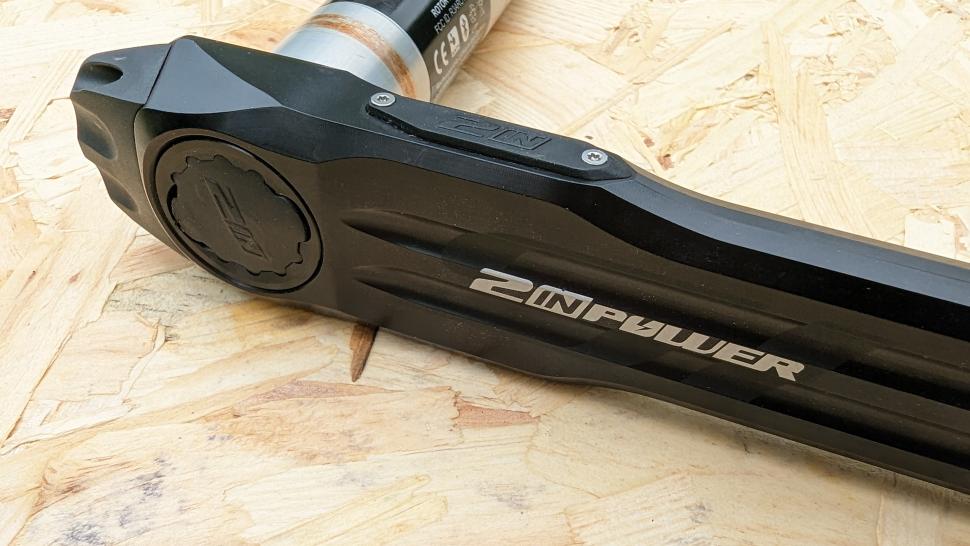

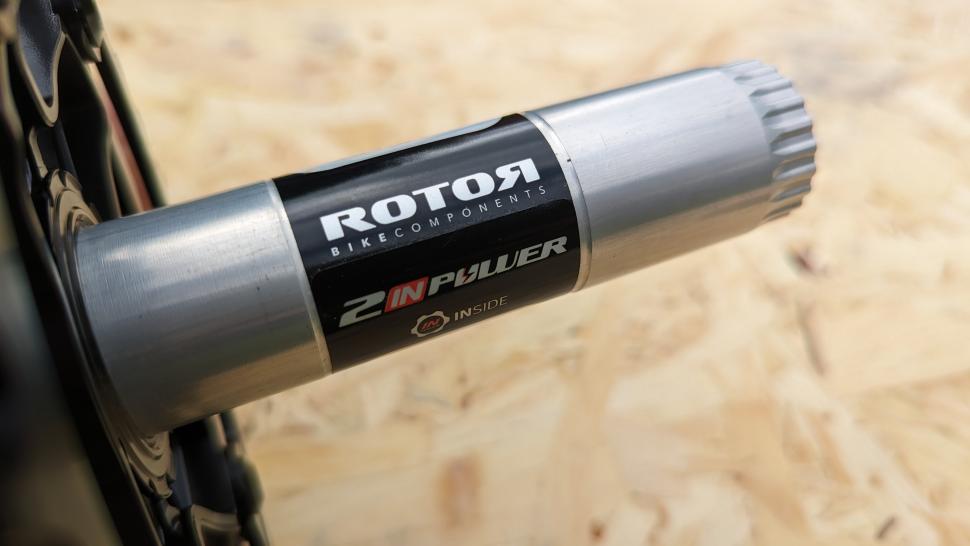
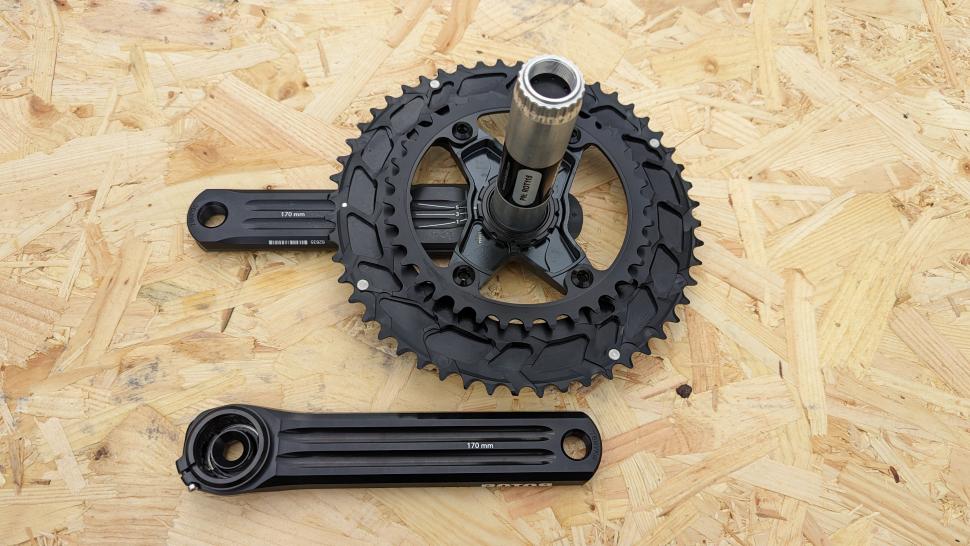
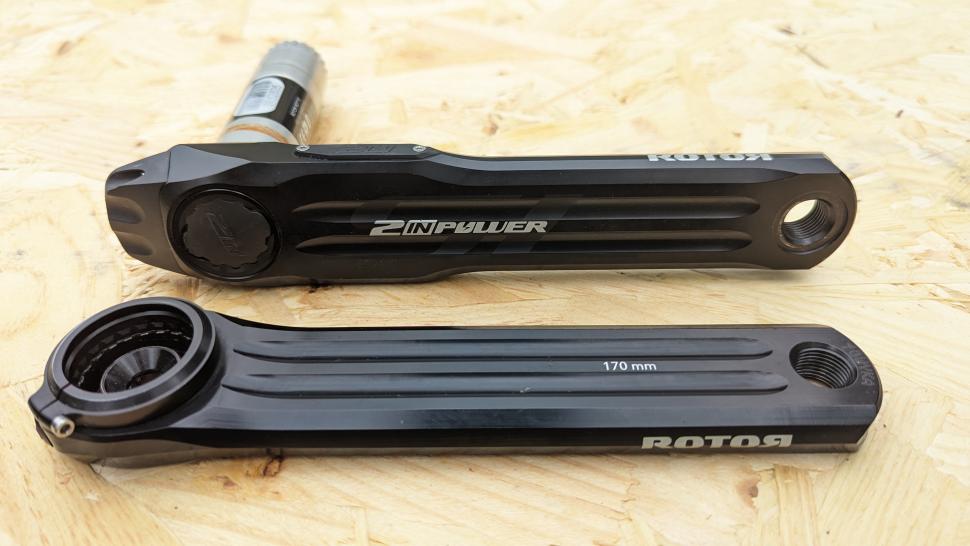













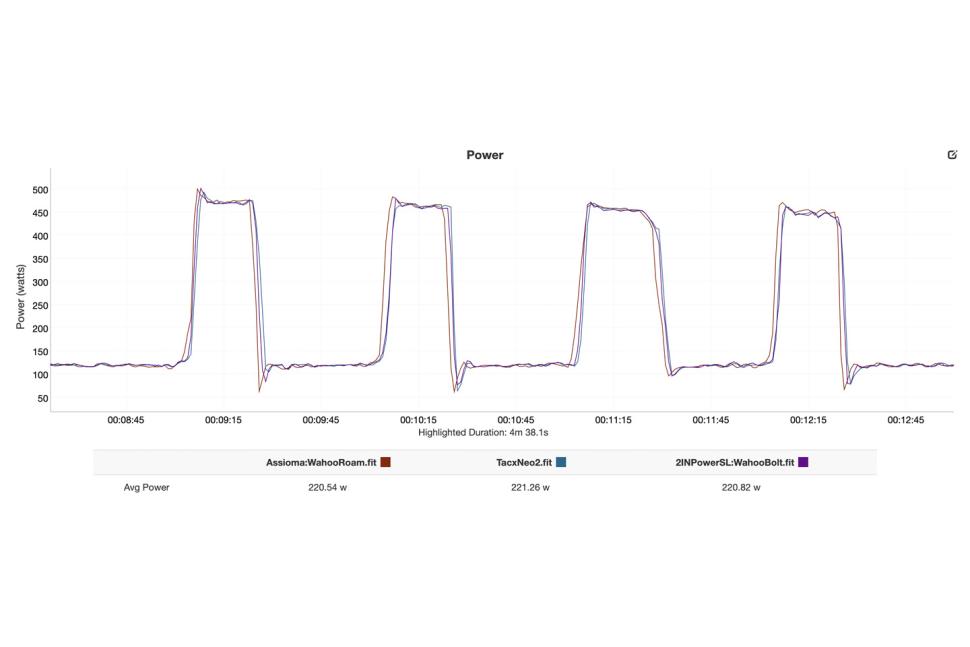

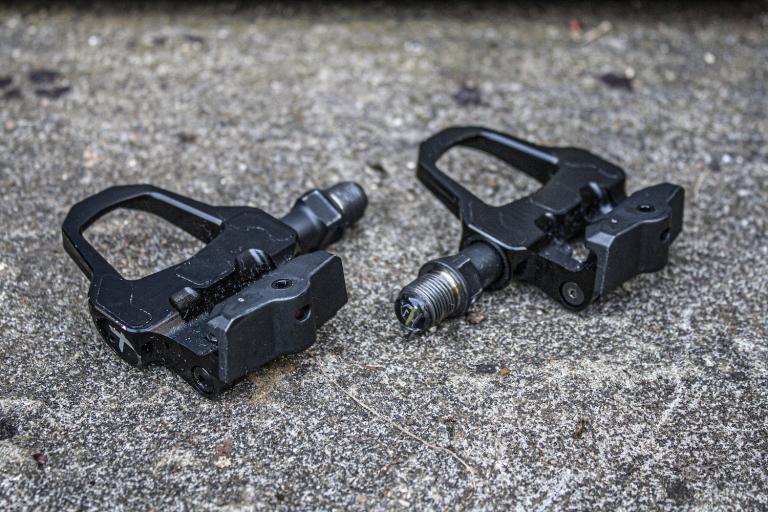



I like how the other car dirver was shocked by him too. Absolutely unreal.
I've got a pair of these shoes in the wide fitting and they're very comfortable. I also bought the Vaypor inner soles to go with them which come...
I think it's also worth noting that shoe fits change between shoes within the same brand's range - for example, my bike fitter told me that my...
Seems a bit of a missed opportunity with such a deep unit not to include a little side window for better coverage....
No video of the pro-am bike race? Shame.
Some next level headlining here ...
It's another school run situation, only with hedge clippings.
Isn't the issue that speed limits are not seen as "never exceed" limits but apparently "speed you should be going normally". Hence for fairness we...
And so it begins......